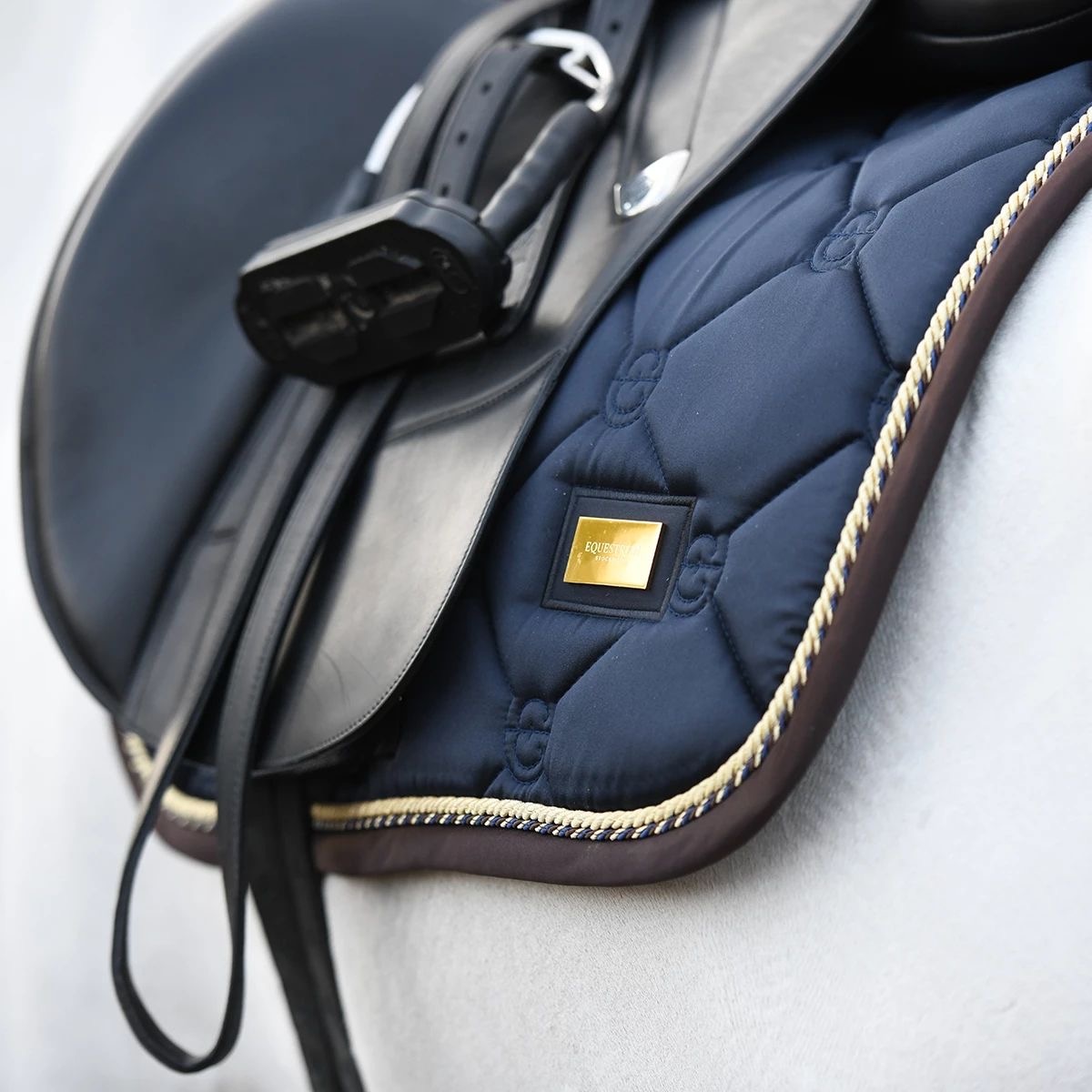Navigating the Saddle Pad Spectrum: A Comprehensive Guide to Equestrian Comfort
- Posted on
- By Lydia Harouna
- Posted in anytimetack, Horse, saddle pad
- 0

This comprehensive guide navigates the intricate world of saddle pads, emphasizing their vital role in ensuring comfort for both horse and rider. The distinction between English and Western saddle pads is explored, highlighting their tailored features. Material considerations, including fleece, neoprene, and high-tech fabrics, are discussed, emphasizing the impact on breathability and durability. The role of padding, thickness, and discipline-specific designs is outlined, showcasing the nuanced choices riders face. Ventilation, style expression, and maintenance tips are also addressed, underscoring the holistic approach required when selecting saddle pads for optimal performance and equine well-being.
Saddle pads stand as the unsung heroes of the equestrian world, providing a crucial layer of protection and comfort for both horse and rider. However, the diversity within the realm of saddle pads can be perplexing. In this exploration, we aim to demystify the intricate tapestry of saddle pads, unraveling the distinctions that cater to the nuanced needs of various riding disciplines and, most importantly, ensuring the well-being of our equine companions.
When delving into the world of saddle pads, the first discernible dichotomy arises between English and Western styles. English saddle pads, designed for close-contact saddles, are characteristically smaller and lighter. They prioritize shock absorption and moisture-wicking to maintain optimal comfort during rides. Conversely, Western saddle pads are larger, more contoured, and provide substantial cushioning to support the weight of Western saddles, reflecting the distinctive demands of Western riding.
Material selection constitutes another pivotal factor influencing the functionality of saddle pads. From traditional fleece to modern marvels like neoprene and high-tech fabrics, each material offers a unique blend of breathability, durability, and moisture management. The discerning rider must consider the merits of each to align with the specific needs of their riding routine.
Beyond material, the padding itself becomes a critical element in the saddle pad narrative. Gel inserts, memory foam, and classic felt are among the choices available, each tailored to address the unique pressure points associated with diverse riding styles. Thickness, too, plays a role in the rider's connection and the horse's comfort, with some disciplines favoring thinner pads for a closer feel and others opting for thicker pads to absorb shocks effectively.
Discipline-specific designs further differentiate saddle pads. Dressage pads boast a sleek, minimalistic design to accommodate the subtleties of this precise discipline, while pads for show jumping may prioritize impact absorption. Barrel racing and trail riding saddle pads, meanwhile, focus on providing stability and support during high-energy maneuvers and extended rides, respectively.
Ventilation emerges as a crucial consideration, particularly in disciplines requiring substantial exertion from the horse. Moisture-wicking properties and strategic ventilation designs ensure horses remain cool and comfortable, even in the heat of performance.
While functionality takes precedence, saddle pads also serve as an extension of personal style for riders. Custom designs, traditional patterns, and an array of colors allow riders to express their personality while ensuring peak performance.
Maintaining the hygiene and longevity of saddle pads is equally paramount. In the conclusion, we underscore the importance of selecting the right saddle pad as a pivotal decision that goes beyond aesthetics, impacting the well-being, performance, and longevity of both horse and rider.

Comments
Be the first to comment...